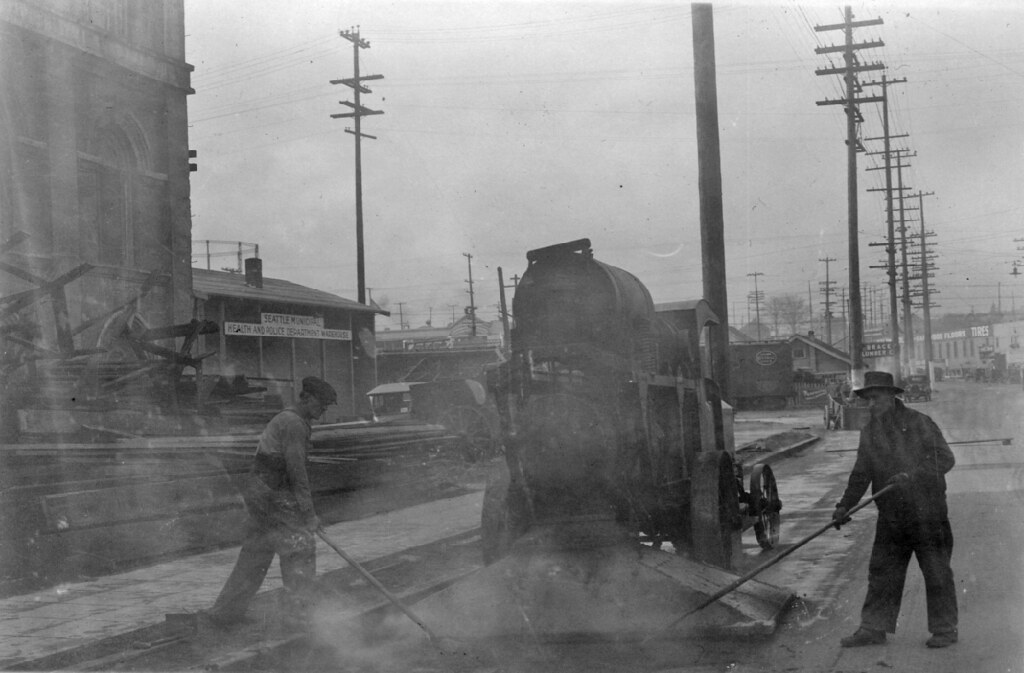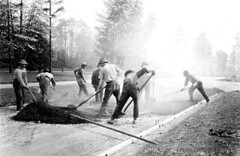Edward J. De Smedt is a professor who emigrated from Belgium. Known for having invented modern road asphalt in 1870. The word asphalt comes from the Greek “asphaltos” and meaning “secure”.
Edward J. De Smedt
Image source: http://www.amazingbelgium.be/2015/10/edward-de-smedt-inventor-of-road-asphalt.html
Not much is known about the life of Edward de Smedt, pictures of him are extremely rare and the information about him are really few, perhaps, his fame has been occluded by stars of the road construction industry, as John Loudon McAdam and Thomas Telford. However, experts on the history of road building will always have a special spot for this person, without which our roads would simply not be the same today.
Composition and history of asphalt
Asphalt is now very present in the urban environment and is assumed to be a modern material. In asphalt the content of calcium carbonate generally varies between 50% and 90%, while that of natural bitumen is between 7% and 15%; the remainder is made up of other mineral materials and volatile substances. Currently, the quality of the materials is continuously improving, with great use of recyclable materials.

Image source: https://search.creativecommons.org/photos/97a8f707-b5cf-4005-a5ba-78daa1d8afe2 by Seattle Municipal Archives
The history of asphalt begins thousands of years ago, found in both paved lakes and rock asphalt (a mixture of sand, limestone, and asphalt):
625 B.C.
The earliest documented use of asphalt as a road construction material in Babylon dates back to this period. The ancient Greeks and Romans knew this material, and the Romans in particular used it to seal their baths, tanks, and aqueducts.
Early 1800
Thomas Telford, perfecting the method of building roads with broken stones has built more than 900 miles of roads in Scotland. His contemporary, John Loudon McAdam, used broken stones joined together to form a hard surface to build a Scottish highway. To reduce dust and maintenance, builders used hot tar to bind broken stones together, producing “tarmacadam” paving.
1900
Frederick J. Warren has filed a patent for the “Bitulithic” flooring, a mixture of bitumen and aggregate (“bitu” from “bitumen” and “lithic” from “lithos”). In 1901 the Warren Brothers built the first modern asphalt plant in East Cambridge, Mass.

Image source: https://search.creativecommons.org/photos/04ba9632-ecae-4601-acd5-a1917f453ecf by Seattle Municipal Archives

Image source: https://search.creativecommons.org/photos/b0c373eb-7ac3-45fa-bb35-4347f9620971 by Seattle Municipal Archives
1970
The international energy crisis has underlined the need for the conservation of natural resources, so since that time, an increasing amount of recycled asphalt has been incorporated into the mixes. Today, asphalt pavement is the most recycled material in the world with over 100 million tons of asphalt pavement material recycled every year.
2002
The EPA has announced that asphalt plants are no longer on its list of industries considered the main sources of dangerous air pollutants.
The contribution of Edward De Smedt
The first steps came in the 1860s when Edward de Smedt was working on coal dust problems at Columbia University in New York City. He called it “sheet asphalt pavement” but it became known as “French asphalt pavement”. Initially, the roads aren’t born for cars, but for cyclists, that they soon became the pioneers of motoring. On 29 July 1870, the first sheet of professor asphalt pavement was laid on William Street in Newark, New Jersey. The asphalt was made with native bitumen from West Virginia. The trial wasn’t a success. Two years later, Battery Park and Fifty Avenue, in New York City were corporeted with an improved mix, which fared better. Between 1876 and 1878 De Smedt used asphalt from both Lake Trinidad and Val de Travers to created two separate asphalt trails on the high-profile Pennsylvania Avenue in Washington. The cyclists flocked on the smooth, clean roads, not caring which country the bitumen came from. Edward didn’t have the market to himself. Many others soon developed their own asphalt recipes for use in American cities.

Image source: http://www.amazingbelgium.be/2015/10/edward-de-smedt-inventor-of-road-asphalt.html
Info sources:
http://www.amazingbelgium.be/2015/10/edward-de-smedt-inventor-of-road-asphalt.html
http://www.simivalleyasphalt.com/id15.html
http://www.famousbelgians.net/desmedt.htm http://www.beyondroads.com/

